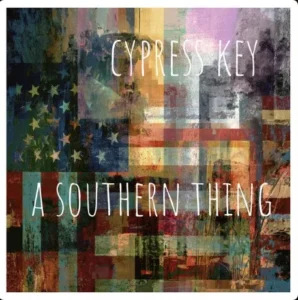Inside the Alleged Sabotage: How Tommy Mottola and Sony Suppressed Mariah Carey’s Career at the End of Her Contract
Mariah Carey’s final years at Sony were marred by alleged sabotage, led by her ex-husband and label head Tommy Mottola. Through sample interference, lack of promotion, and manufactured competition with Jennifer Lopez, Carey’s artistic freedom was systematically stifled. Industry voices, including Irv Gotti and Ja Rule, have since confirmed the deliberate efforts to derail her momentum ahead of her departure from Sony.
During the late 1990s and early 2000s, Mariah Carey‘s legendary career went through a turbulent period, both musically and behind the scenes at Sony Music Entertainment. According to a growing body of evidence, industry testimony, and firsthand accounts, Tommy Mottola is the most likely candidate. The then-head of Sony and Mariah’s ex-husband engaged in deliberate tactics to devalue her career as she approached the end of her Sony contract.
The “Heartbreaker” and “Glitter” Eras: When the Conflict Turned Public
Mariah’s tensions with Sony were on the rise when she released her chart-topping single ‘Heartbreaker’ in 1999 and started developing her ambitious ‘Glitter‘ project. As Carey sought more creative control and signaled her intention to leave, the label’s crown jewel became increasingly marginalized within the company. The use of the ‘Firecracker’ sample by Yellow Magic Orchestra is a particularly egregious example of corporate sabotage. This sample had been secured for Mariah’s lead Glitter single, ‘Loverboy,’ as per multiple credible reports.
According to reports, Tommy Mottola had the same sample cleared quickly for Jennifer Lopez’s ‘I’m Real’ after Sony became aware of her plans, and it was strategically released before Mariah’s version. Mariah had to replace the sample at the last minute, which had a significant impact on her song’s rollout and altered the artistic direction she had envisioned for it.
Irv Gotti and the Ja Rule Blueprint: A Strategic Diversion
Murder Inc. Founder Irv Gotti confirmed in a candid interview that Mottola instructed him to duplicate Mariah’s style with urban artists like Ja Rule for Lopez instead.
“He called me and said, ‘I need you to make a record with Ja and J.Lo that sounds like the one you’re doing with Mariah,'” Gotti stated.
Mariah’s behind-the-scenes development was closely reflected in ‘I’m Real (Murder Remix),’ which is a street-leaning R&B track. This was not a coincidence. The industry made a calculated decision to remove Mariah’s musical innovations and shift attention towards Jennifer Lopez, who Sony was actively promoting while Mariah was leaving the label.
Undermining Promotion During the “Rainbow” Era
Mariah’s silence was not just limited to musical appropriation. During the promotional cycle for her 1999 album “Rainbow,” Mariah publicly clashed with Sony over the lack of support for her single “Can’t Take That Away (Mariah’s Theme),” a deeply personal ballad about resilience and artistic freedom. Sony provided limited airplay and promotional support despite Carey’s direct pleas through her website and online fan communities, despite the support of fans. Mariah revealed that she was told directly that the label wouldn’t promote the record, which is a direct contrast to the strong rollouts typically given to lead singles from an artist of her stature. It became apparent that Sony was intentionally stopping her creative output.
While Mariah was struggling to maintain creative and commercial control, Jennifer Lopez’s star was rapidly rising, thanks in part to Sony’s marketing machine. The timing of her releases, often aligned to preempt Mariah’s, raised questions about how much of her success was fueled by original artistry versus the strategic positioning of the label. Notably:
The use of the same sample that Carey had planned to debut.
The sudden collaboration with Ja Rule and Irv Gotti echoed Mariah’s direction.
Radio and video platforms prioritized Lopez’s releases, often while Mariah’s were stalled or unsupported.
The pattern overlaps were not random. Sony’s resources and attention were directed to a newer, more compliant artist under their wing, which was orchestrated.
Industry Voices and Insider Confirmation
Besides Irv Gotti’s revelations, many other industry figures have validated Mariah’s claims.
In response to Ja Rule’s reflection on the situation, Damion Young, who has previously worked as a radio executive and producer for Carey, commented:
“You and me both, buddy…”
Ja Rule addressed the controversy on his own Instagram account in the comments section of the TFU Podcast:
“I hate that I was used as a pawn in all this… I was a young artist just happy to be writing for some of my favorite artists… smh. Love to both those Queens… Mariah & Jennifer.”
The comments express regret and awareness that many of the collaborators involved were part of a larger, label-driven scheme that attempted to undermine and devalue Mariah Carey’s cultural and commercial power at a crucial time.
Mariah Carey Speaks Out
Mariah has become more outspoken about her experiences, frequently alluding to the corporate sabotage and emotional toll that occurred during this time. During interviews, she highlighted the oppressive control exerted by Mottola and the emotional burden of being hindered from executing her creative vision. She has portrayed that era as a time of personal and professional freedom, albeit achieved through conflict and industry politics. Her transparency has further validated the accounts shared by insiders over the years.
A Legacy Tarnished — and Then Reclaimed
Mariah Carey’s success was ultimately restored, and she signed a landmark deal with Virgin Records, allowing her to continue releasing critically acclaimed and commercially successful music despite attempts to suppress her success.
Her album ‘The Emancipation of Mimi’ in 2005 marked one of the most celebrated comebacks in pop history, with No. 1 hits and renewed industry respect. The story of her departure from Sony and how her artistic voice was manipulated remains a cautionary tale in music industry politics. It demonstrates how power dynamics, corporate rivalry, and personal vendettas can be used as weapons, even against the biggest stars in the world.
Conclusion: A Calculated Effort to Silence a Powerhouse
Under Tommy Mottola’s leadership at Sony Music, Mariah Carey’s musical legacy was actively diminished, and the evidence is clear and supported by firsthand accounts. The label tried to substitute her voice with one they could control through sample interference, collaborator redirection, internal suppression of promotion, and competitive artist positioning. Mariah not only survived but also thrived in the end. The scars of that era serve as a clear demonstration of how the music industry can operate with secrecy and manipulate outcomes in favor of power over artistry.








